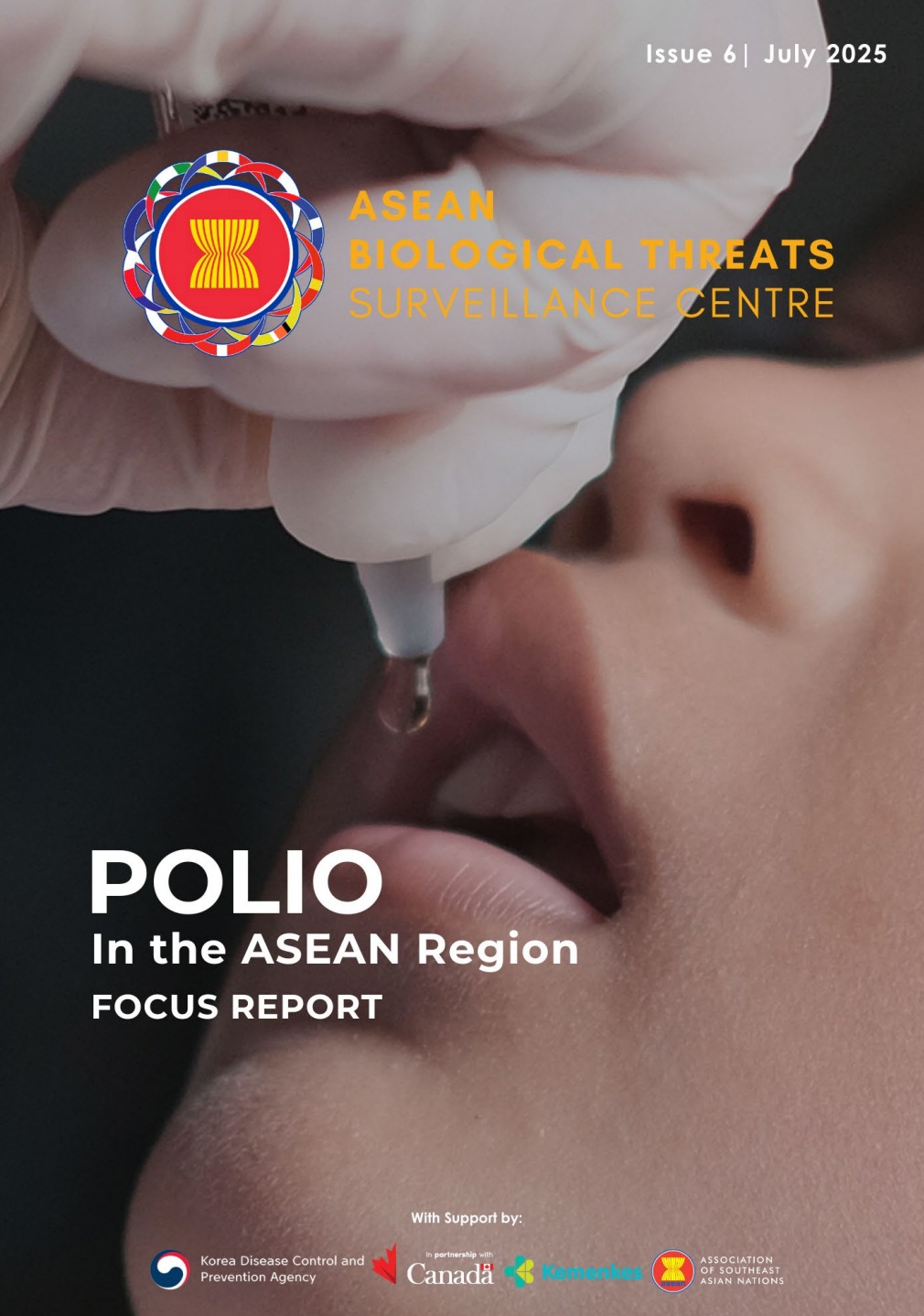Focus Report Polio in the ASEAN Region
Focus Report Polio in the ASEAN Region
Focus Report
July 29, 2025
Focus Report Polio in the ASEAN Region
Time Period Covered July 29, 2025 - July 29, 2025
Poliomyelitis (polio) is an acute, highly infectious viral disease that primarily affects young children and targets the nervous system, potentially leading to permanent paralysis and, in some cases, death (WHO, n.d). The disease has been present for millennia, with depictions of individuals exhibiting withered limbs found in ancient Egyptian artifacts. However, the first clinical description was made by Dr. Michael Underwood in 1789, and the condition was formally recognized as poliomyelitis by Jakob Heine in 1840. Polio became a major public health concern during the late 19th and early 20th centuries, with frequent and often deadly epidemics. A 1916 outbreak in New York City alone caused over 2,000 deaths, and the peak of the U.S. epidemic in 1952 resulted in more than 57,000 cases and over 3,000 deaths. Advances in virology led to a critical breakthrough in 1949, when John Enders, Thomas Weller, and Frederick Robbins successfully cultivated poliovirus in human tissue, earning them the Nobel Prize in 1954 and paving the way for vaccine development.

 Focus Report Polio in the ASEAN Region
Focus Report Polio in the ASEAN Region